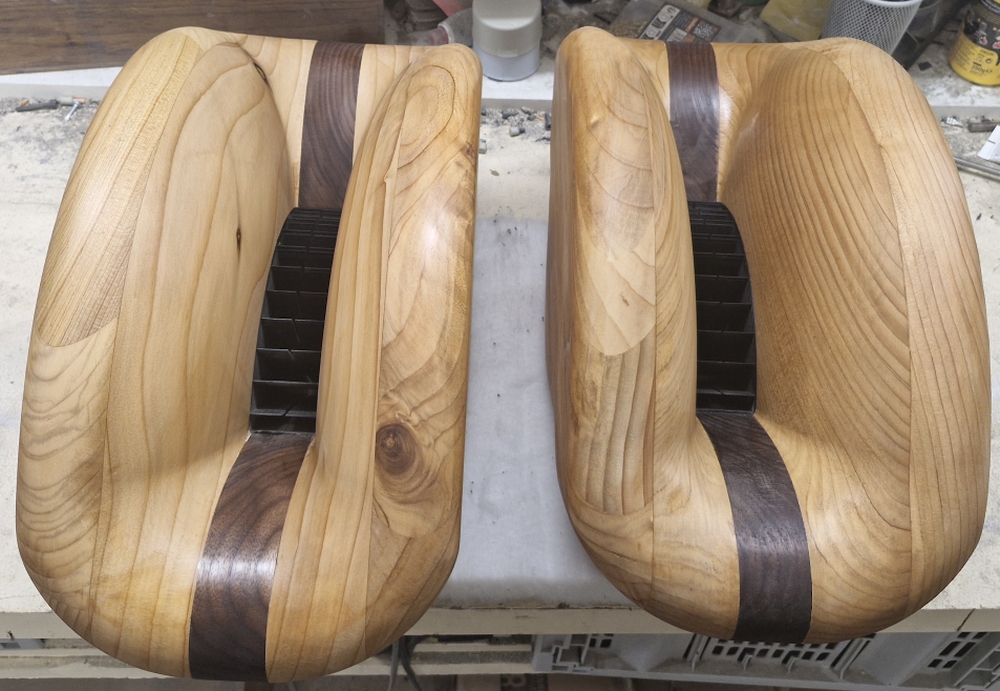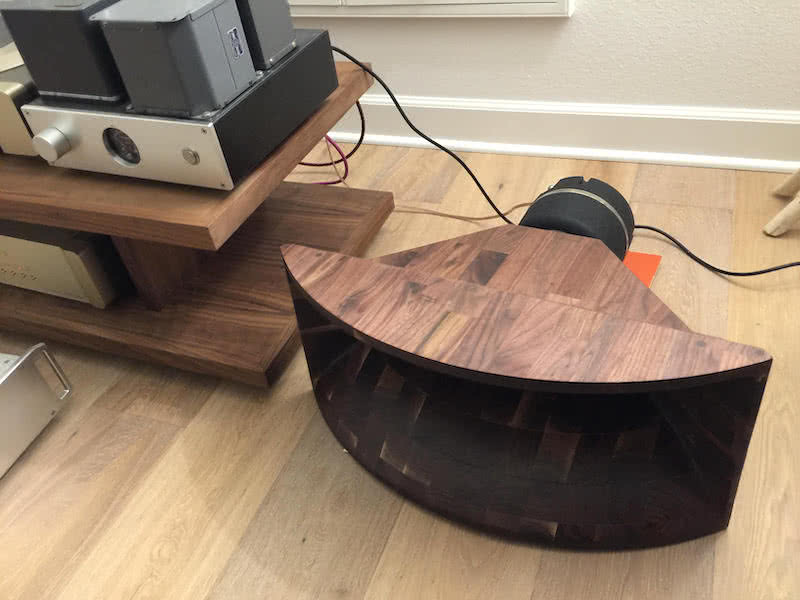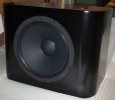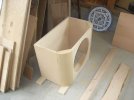I represent sound & acoustics and offer different acoustic services. We sell RPG products and also offer custom ones of these that are not seen online.
Some examples of services and prices:
1. Acoustic consultancy for one week via email with advice for acoustic products we sell and how to measure the room in regards to room modes and choosing type of bass trapping and its placement. Price 3000 NOK (not tax/VAT outside of Norway). With today’s currency that’s about $279 or 255 Euro.
2. Same as above, but also includes tips how to build your own absorbers and bass traps with porous material (not diffusers or pressure based traps). Price 5000 NOK for one week. With today’s currency: About $465 or 426 Euro
Both can be renewed with another week for the same price if more time is needed. Or if you believe you need more time, a set price for a certain time span can be agreed on.
I can also assist with finding best placement in room for speakers and listening position, integration of subwoofer and use of DSP/EQ. This normally takes a bit more than a week for most.
Will need information like:
Room dimension, placement of speakers and listening position, pictures of the room and especially if the goal is to treat lower frequencies you should be able to measure with REW and send the measuring file. If you plan to address sub frequencies with pressure based traps measurements is also required. However, if you simply generally want to improve the bass above approximately above 90-100 Hz we get a long way without measurements.
Measurements are needed in regards to subwoofer integration and finding optimal placement.
Experience:
I’ve worked professionally with room acoustics since 2015 and have years of practical experience before that. I’ve assisted both audiophiles with stereo setups, surround systems, recording/mixing studios, and homes with general improvement of acoustics besides larger venues.
I have practical experience with several small room acoustical principles and have tested various products and different types of treatment over many years.
I’m also involved in developing speakers and have good understanding of speaker designs.
Goal:
I listen to what the customer desires in order to choose the right treatment. A good sounding space isn’t necessarily the same as an accurate listening environment for everyone. Perhaps you want something more on the spacious and enveloping side instead of highly accuracy with hearing the mix as detailed as possible. It may also depend on what type of treatment you can live with, aesthetics, where you can place treatment and budget. My goal is to assist in this and tell you what you can experience with different types of treatment.
What can you except?
Will obviously depend on treatment and surface covered but generally, we should see an improvement in:
- More even frequency response, if the treatment is sufficiently effective
- Less specular energy with the result of greater clarity, intelligibility, more correct tonality, smoother sound with less listening fatigue
- Great envelopment and a larger image/ increased spaciousness if diffusion or hybrid diffusion/absorption is used
- Less resonances with the experience of less muddiness, tighter bass and often the experience of a bass that is “quicker” and gives more “slam” due to a shorter decay and less ringing. This can also clean up the midrange and treble
What you cannot expect:
- If you have large deviations in the frequency response, little treatment isn’t going to even this out. Especially for sub frequencies, treatment needs to be quite large and cover much surface area for major improvement in the frequency response. Some bass trapping will still improve the time domain though with a shorter decays and less resonances, which may be quite audible. But adding a few smaller bass traps will not flatten the response much. Frequencies above 100 Hz is easier to treat but generally still requires more than a few panels for big changes in the response. But again, the domain will improve and the importance of this is often overlooked by many.
- If you only have certain areas where you can place treatment and they happen to be at places where there are no arrival specular energy from or it’s isn’t at a pressure point for low frequencies, treatment will generally not help much at your listening position. It may help more other places in the room, but for the “sweet spot” it may be a waste.
- I don’t consider the reverberation time in a small room. It’s well established in the small room acoustical community that RTx measurements are not valid in small rooms. Just because the number goes down with added absorption doesn’t mean the equation is correct and gives a good picture of a well designed listening space. RTx graphs can be very misleading in a small acoustical space. You can read more about this here: https://www.lydogakustikk.no/en/small-rooms-and-reverberation-time/
Whether you look at these measurements yourself is of course up to you, but it’s on focus area for me at all
- In the past I’ve offered some drawings and renderings of the room with acoustic products, but it’s something I have stopped doing. While this may look cool, it generally doesn’t give a very accurate presentation of the colors, fabric, and aesthetics. It’s better for me for example to send you color swats of fabrics if you are uncertain about which fabric color to choose. 3D drawings also takes up time that can be used better for something else
Questions and answers:
- How do I pay?
Payment is in advance where I sent an invoice to you email address, and I prefer using Wise for transfer. Wise works as paypal but is considerably cheaper. https://wise.com/
If you want to use paypal I would need to add a fee of 3%.
Wire transfer is also ok to use if you live in Europe.
- Can you also advice in commercial products from other vendors?
Especially if you live in an area where we can’t sell you the products that we offer, yes I can. I have a good knowledge about many other brands and products and have also tested some of these. Some are good and some are not
- Can I not simply use EQ?
EQ is a powerful tool when used correctly. However, it cannot replace physical treatment in a room because most of the room response isn’t minimum phase behavior, it can’t add diffuse energy, remove flutter echo or minimize comb filtering. The best is always to do the treatment you can do and apply equalization carefully at the end. EQ of dips and peaks of the room response that is not minimum phase should generally be avoided, especially above the Schroeder frequency
 www.lydogakustikk.no
www.lydogakustikk.no
Contact info: [email protected]
Some examples of services and prices:
1. Acoustic consultancy for one week via email with advice for acoustic products we sell and how to measure the room in regards to room modes and choosing type of bass trapping and its placement. Price 3000 NOK (not tax/VAT outside of Norway). With today’s currency that’s about $279 or 255 Euro.
2. Same as above, but also includes tips how to build your own absorbers and bass traps with porous material (not diffusers or pressure based traps). Price 5000 NOK for one week. With today’s currency: About $465 or 426 Euro
Both can be renewed with another week for the same price if more time is needed. Or if you believe you need more time, a set price for a certain time span can be agreed on.
I can also assist with finding best placement in room for speakers and listening position, integration of subwoofer and use of DSP/EQ. This normally takes a bit more than a week for most.
Will need information like:
Room dimension, placement of speakers and listening position, pictures of the room and especially if the goal is to treat lower frequencies you should be able to measure with REW and send the measuring file. If you plan to address sub frequencies with pressure based traps measurements is also required. However, if you simply generally want to improve the bass above approximately above 90-100 Hz we get a long way without measurements.
Measurements are needed in regards to subwoofer integration and finding optimal placement.
Experience:
I’ve worked professionally with room acoustics since 2015 and have years of practical experience before that. I’ve assisted both audiophiles with stereo setups, surround systems, recording/mixing studios, and homes with general improvement of acoustics besides larger venues.
I have practical experience with several small room acoustical principles and have tested various products and different types of treatment over many years.
I’m also involved in developing speakers and have good understanding of speaker designs.
Goal:
I listen to what the customer desires in order to choose the right treatment. A good sounding space isn’t necessarily the same as an accurate listening environment for everyone. Perhaps you want something more on the spacious and enveloping side instead of highly accuracy with hearing the mix as detailed as possible. It may also depend on what type of treatment you can live with, aesthetics, where you can place treatment and budget. My goal is to assist in this and tell you what you can experience with different types of treatment.
What can you except?
Will obviously depend on treatment and surface covered but generally, we should see an improvement in:
- More even frequency response, if the treatment is sufficiently effective
- Less specular energy with the result of greater clarity, intelligibility, more correct tonality, smoother sound with less listening fatigue
- Great envelopment and a larger image/ increased spaciousness if diffusion or hybrid diffusion/absorption is used
- Less resonances with the experience of less muddiness, tighter bass and often the experience of a bass that is “quicker” and gives more “slam” due to a shorter decay and less ringing. This can also clean up the midrange and treble
What you cannot expect:
- If you have large deviations in the frequency response, little treatment isn’t going to even this out. Especially for sub frequencies, treatment needs to be quite large and cover much surface area for major improvement in the frequency response. Some bass trapping will still improve the time domain though with a shorter decays and less resonances, which may be quite audible. But adding a few smaller bass traps will not flatten the response much. Frequencies above 100 Hz is easier to treat but generally still requires more than a few panels for big changes in the response. But again, the domain will improve and the importance of this is often overlooked by many.
- If you only have certain areas where you can place treatment and they happen to be at places where there are no arrival specular energy from or it’s isn’t at a pressure point for low frequencies, treatment will generally not help much at your listening position. It may help more other places in the room, but for the “sweet spot” it may be a waste.
- I don’t consider the reverberation time in a small room. It’s well established in the small room acoustical community that RTx measurements are not valid in small rooms. Just because the number goes down with added absorption doesn’t mean the equation is correct and gives a good picture of a well designed listening space. RTx graphs can be very misleading in a small acoustical space. You can read more about this here: https://www.lydogakustikk.no/en/small-rooms-and-reverberation-time/
Whether you look at these measurements yourself is of course up to you, but it’s on focus area for me at all
- In the past I’ve offered some drawings and renderings of the room with acoustic products, but it’s something I have stopped doing. While this may look cool, it generally doesn’t give a very accurate presentation of the colors, fabric, and aesthetics. It’s better for me for example to send you color swats of fabrics if you are uncertain about which fabric color to choose. 3D drawings also takes up time that can be used better for something else
Questions and answers:
- How do I pay?
Payment is in advance where I sent an invoice to you email address, and I prefer using Wise for transfer. Wise works as paypal but is considerably cheaper. https://wise.com/
If you want to use paypal I would need to add a fee of 3%.
Wire transfer is also ok to use if you live in Europe.
- Can you also advice in commercial products from other vendors?
Especially if you live in an area where we can’t sell you the products that we offer, yes I can. I have a good knowledge about many other brands and products and have also tested some of these. Some are good and some are not
- Can I not simply use EQ?
EQ is a powerful tool when used correctly. However, it cannot replace physical treatment in a room because most of the room response isn’t minimum phase behavior, it can’t add diffuse energy, remove flutter echo or minimize comb filtering. The best is always to do the treatment you can do and apply equalization carefully at the end. EQ of dips and peaks of the room response that is not minimum phase should generally be avoided, especially above the Schroeder frequency
Lyd & Akustikk | Web based acoustic advisory service
 www.lydogakustikk.no
www.lydogakustikk.no
Contact info: [email protected]




